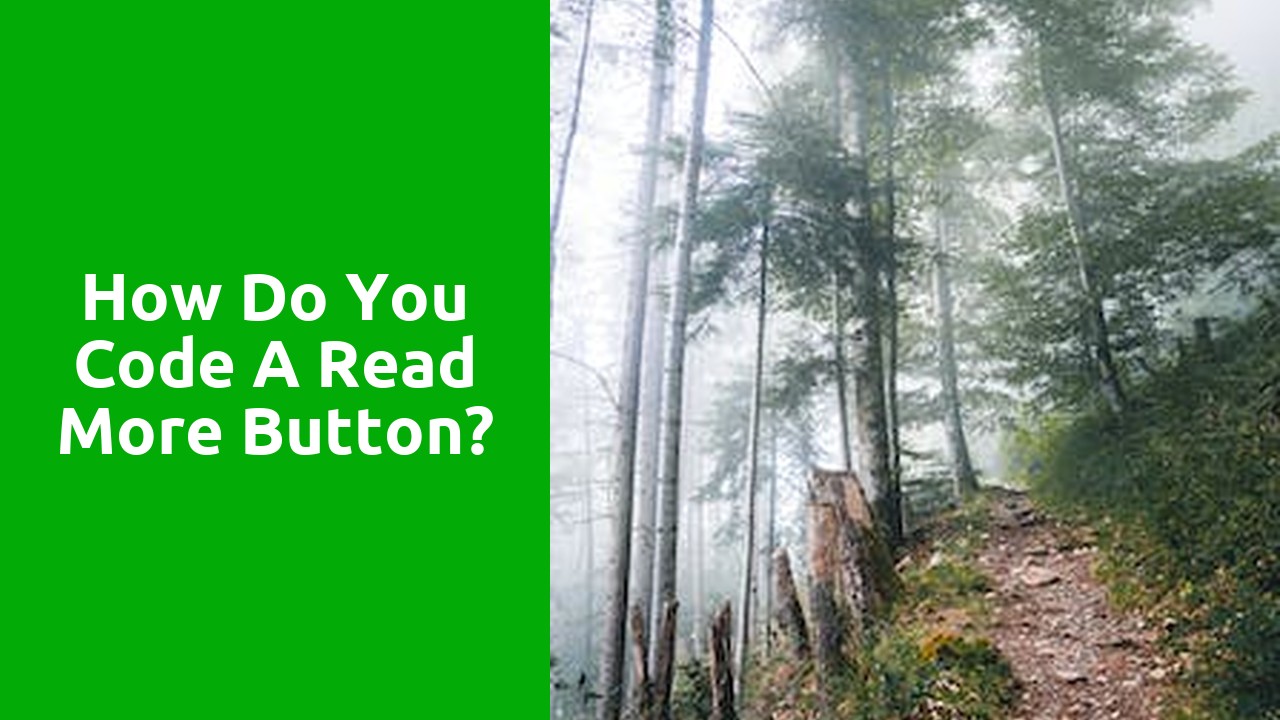How do you code a read more button?

Understanding the need for a "Read More" button
With the rise of digital content and the ever-increasing amount of information available online, the need for a "Read More" button has become essential. This simple feature allows users to access additional content without cluttering the main page or overwhelming the reader. By only displaying a summary or excerpt of a longer article or piece of content, the "Read More" button provides users with a sneak peek, enticing them to click and delve deeper into the subject matter.
Moreover, the "Read More" button also improves the overall user experience. It allows readers to skim through different articles or posts quickly, deciding which ones they want to explore further. This feature saves time and offers convenience, especially on platforms where numerous articles are available at once. Additionally, it can be beneficial for mobile users who often have limited screen space and prefer to scroll through a condensed version before investing more time in reading an entire article. By implementing a "Read More" button, website owners and content creators are able to strike a balance between providing enough information to capture interest and avoiding an overwhelming amount of content on the main page.
Identifying the key elements of a "Read More" button
One of the essential elements of a "Read More" button is its design. The button should be visually appealing and stand out from the rest of the content on the webpage. It should be located in a prominent position that is easily visible to users. Additionally, the size and color of the button should be carefully chosen to catch the user's attention and entice them to click.
Another crucial element is the text that appears on the button. The text should be concise and compelling, giving users a clear idea of what they can expect by clicking on it. It should be descriptive enough to spark interest and encourage users to continue reading, without being too lengthy or overwhelming. Careful consideration should be given to the choice of words and the tone used, ensuring that the text aligns with the overall message and brand image of the website.
Exploring different approaches to coding a "Read More" button
One crucial aspect of web design is the implementation of a "Read More" button. This simple yet effective feature offers convenience to users by allowing them to access additional content without cluttering the page. However, there are various approaches to coding this button, each with its own advantages and considerations. In this section, we will explore two popular methods - the CSS approach and the JavaScript approach - for creating a "Read More" button and examine their pros and cons.
The first approach involves using CSS to manipulate the visibility property of the extra content section. By default, the extra content is hidden, and clicking the "Read More" button triggers a CSS transition that reveals the hidden text. This method is lightweight and provides a smooth user experience. However, it may not be suitable for cases where the extra content includes interactive elements or forms, as those would still be inaccessible until the user clicks the button. Additionally, it relies heavily on CSS transitions, which may not be supported in older browser versions.
Using HTML and CSS to create a basic "Read More" button
Creating a basic "Read More" button on a webpage can be achieved easily using HTML and CSS. By utilizing CSS properties and HTML elements, you can enhance the user experience by providing a concise way for readers to expand and view more content without cluttering the page.
The first step in creating a "Read More" button is to define the HTML structure. You can use a
Enhancing the functionality of the "Read More" button with JavaScript
The "Read More" button is an essential element in web design that allows users to access additional content or information without overwhelming the page with excessive text. However, the default functionality of this button is often limited to simply expanding or collapsing the content. With JavaScript, it is possible to enhance the functionality of the "Read More" button to provide a more interactive and user-friendly experience.
One way to enhance the functionality of the "Read More" button is by dynamically loading the additional content when the button is clicked. This can be achieved by utilizing JavaScript's AJAX (Asynchronous JavaScript and XML) capabilities. By making an asynchronous request, the script can load the extra content from a server or a separate file without requiring the page to reload. This not only improves the performance but also allows for a seamless transition between the initial content and the extended information.
Implementing a dynamic "Read More" button for database-driven content
The implementation of a dynamic "Read More" button for database-driven content has become crucial in enhancing user experience on websites. With this functionality, it becomes easier for users to access additional information without overwhelming the initial page layout. By utilizing this feature, websites can optimize the presentation of content, making it more visually appealing and organized.
One of the key advantages of using a dynamic "Read More" button is its ability to adapt to various screen sizes, making it a responsive solution for mobile and desktop users alike. By only displaying a teaser or summary of the content initially, users can maintain an overview of the available information without being bombarded by excessive text. This approach also minimizes the need for scrolling, allowing users to quickly assess whether they want to read more or explore other sections of the website. Additionally, the dynamic nature of the button enables real-time loading of additional content, ensuring a seamless and uninterrupted browsing experience.
Related Links
Who is responsible for trimming overhanging trees NSW?Can you cut down trees on your property Tasmania?